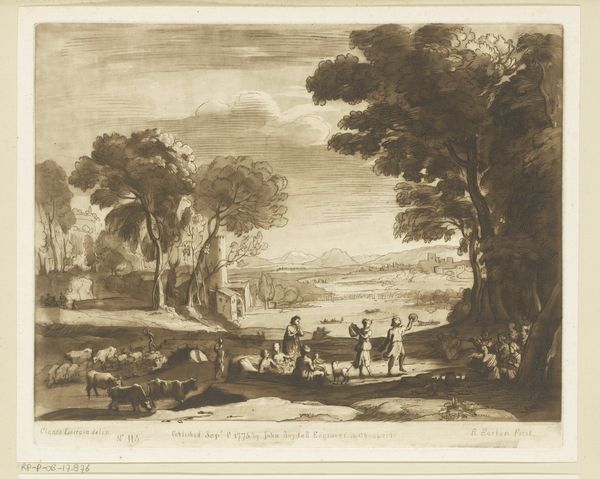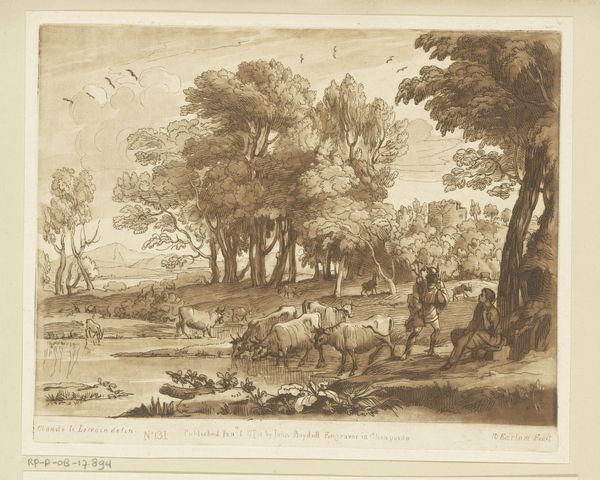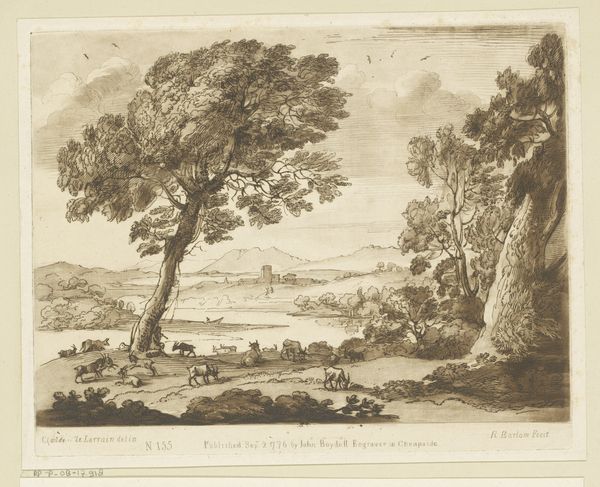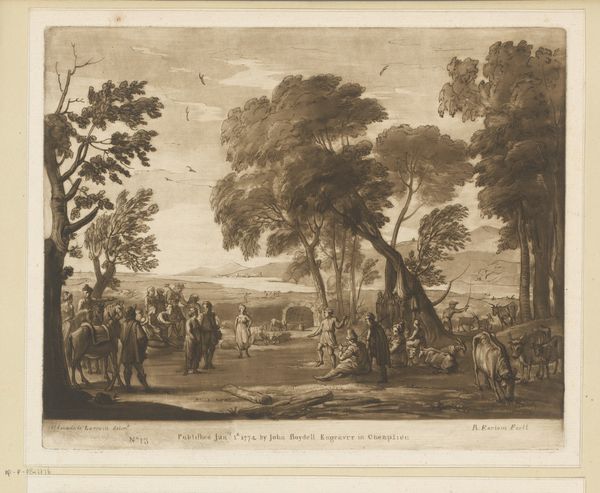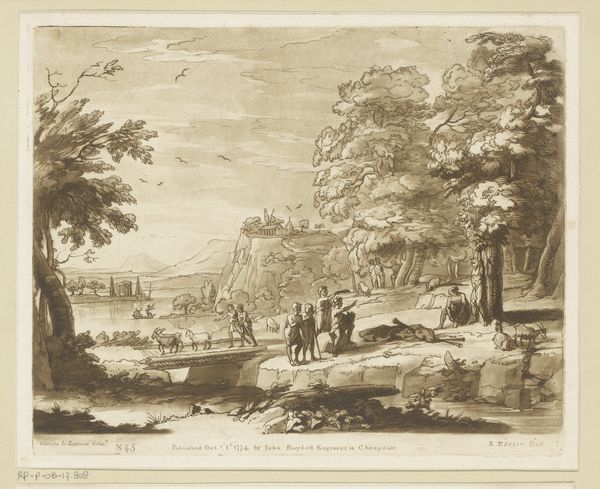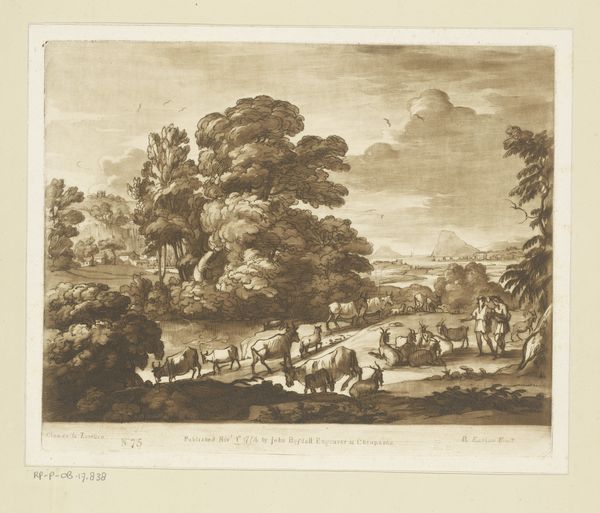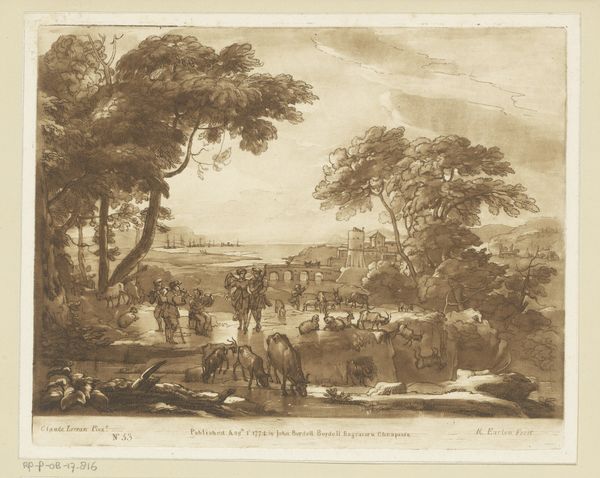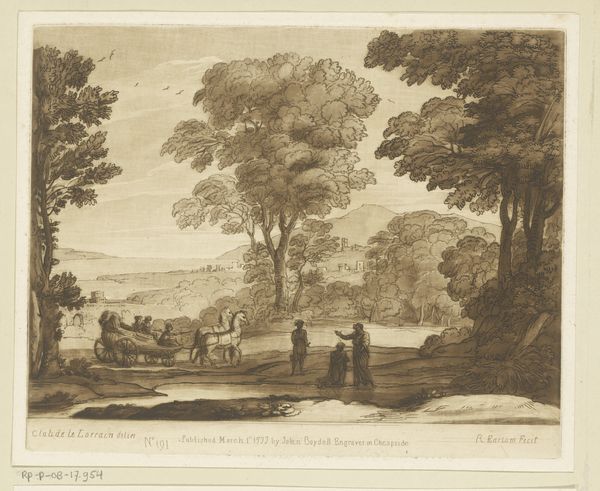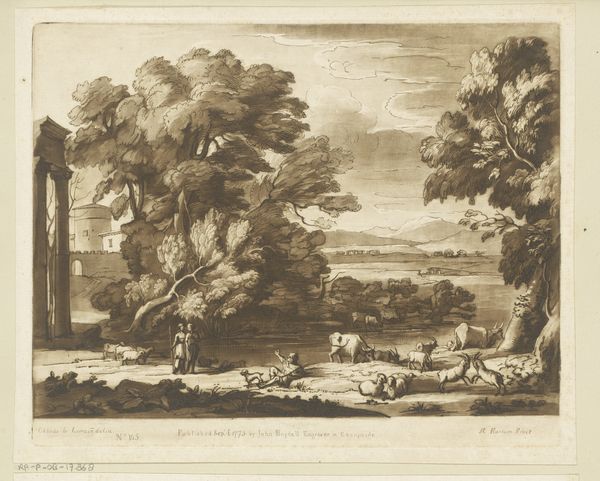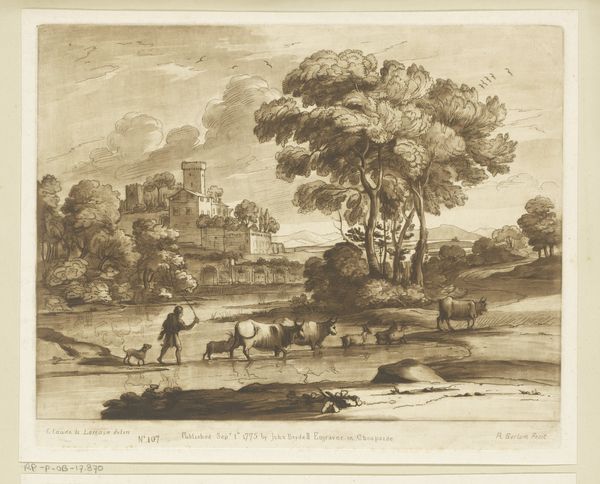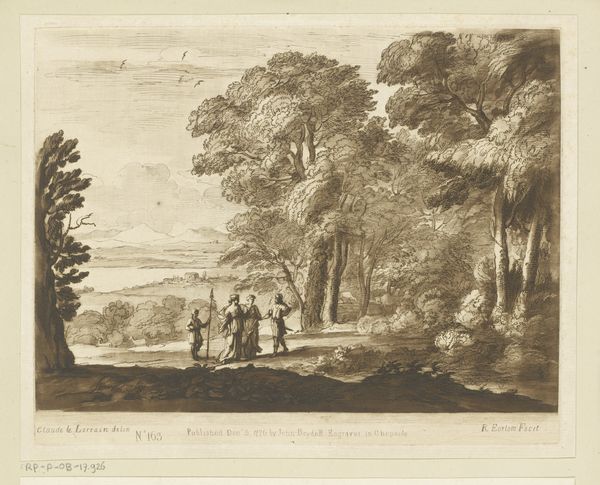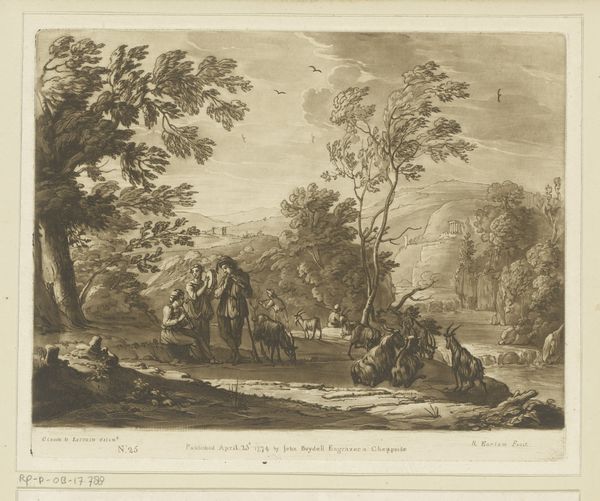
Landschap met twee steden op heuvels en veedrijvers die rivier oversteken Possibly 1775 - 1779
richardearlom
Rijksmuseum
Dimensions: height 207 mm, width 258 mm
Copyright: Rijks Museum: Open Domain
Curator: What a serene scene. We’re looking at “Landscape with two cities on hills and cattle drivers crossing the river,” dating possibly from 1775 to 1779. The piece, currently held at the Rijksmuseum, is an engraving by Richard Earlom. Editor: My initial feeling is that of looking into a dream, like a fond, idealized memory. The sepia tones give it such a lovely, aged quality. Curator: Indeed. Earlom wasn't creating an original composition here, but rather reproducing a drawing by Claude Lorrain. It’s fascinating to observe how the romantic era looked back to and reinterpreted classical pastoral ideals. Notice the tiny figures leading the cattle – the image of simple folk. The cities on the hill are symbols of civilization and human settlement. This blend creates an Arcadian fantasy—an earthly paradise. Editor: Right, that makes perfect sense! The city, far away and smallish in size, really underscores that "humanity in harmony with nature" thing. But there's also something about that low horizon line, giving prominence to the sky... almost feels like the natural world is grander than anything humanity could build. What do you reckon? Curator: I think you've hit on something significant. The atmospheric perspective reinforces that sense of vastness and insignificance in the face of nature's grandeur. Romanticism certainly emphasized that awe and sublime beauty. And this ties into a tradition of landscape as spiritual refuge. People could gaze upon this vista, be transported elsewhere, and perhaps consider something transcendental. Editor: It's so interesting how an image originally meant to represent peace and a simple life can evolve over time and reflect different sensibilities. Now it's also an image *about* the artistic and spiritual ideas of an era. A sort of reflection looking into a reflection. Curator: Exactly. The layered interpretations are part of what make art so compelling. What seemed important to Earlom may be totally different from what we see in the print now, or what Lorrain, whose drawing he was copying, was after originally. But, it all lives in this single image now. Editor: So, as viewers today, we're looking at not just a peaceful countryside, but the history of seeing a peaceful countryside! Lovely thought to end on.
Comments
No comments
Be the first to comment and join the conversation on the ultimate creative platform.
